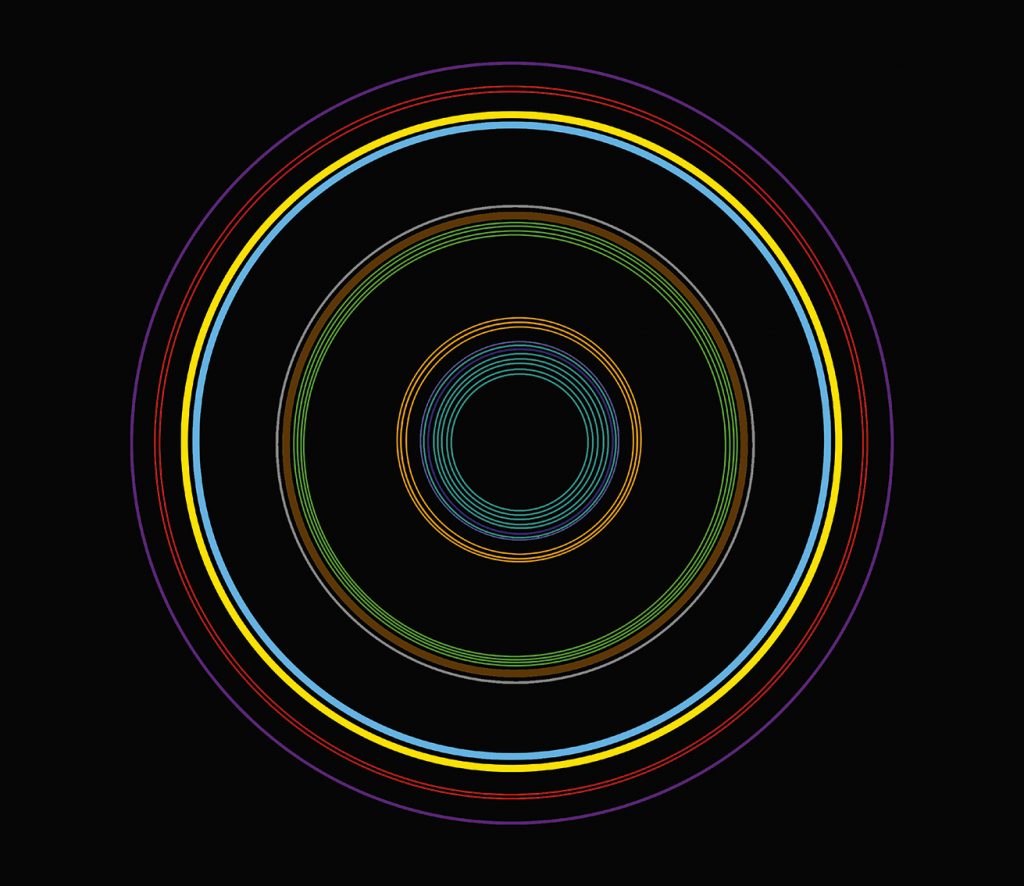Contemporary artist and practice-based PhD researcher, Victoria Evans, is one of the five artists that responded to the call for proposals in March 2020 and participated in the Space and Satellites Artist in Residence programme at Inspace.
During the artist residency, Victoria created a data sonification. This 12 minute sound piece, that you can listen to below, uncovers the patterns of interaction between twelve satellite missions and the Earth, and imagines what their communication might sound like.
Victoria worked with data from the European Space Agency (ESA) to uncover the patterns of movement and communication between twelve space missions and the network of ground stations that support them. Using a process of data sonification as the basis for a creative composition, she hopes the piece enables these complex interactions to be experienced in a new way, through sound.
Deep Space Call and Response is a meditation on the desire to reach out over distance and the importance of international cooperative networks for human survival.
THE DATA
The twelve ESA missions rely on a network of ground stations (giant transceiver dishes) in maintaining contact with the Earth. Since our planet rotates, individual stations have line of sight with a mission for only a portion of each day.
Where continuous contact is required, several ground stations must act together in a relay formation. As one station dips below the horizon, another rises to take its place, and so on.
The data from these interactions forms different patterns depending on the position of a mission in relation to Earth as well as its orbital type and frequency.

THE CREATIVE PROCESS

The first step was to create distinctive sonic identities for each of the space missions. Word associations helped build a conceptual bridge between my factual research and the domestic sounds and vocals I recorded and processed. In order for the patterns of satellite movement and communication to be audible across the range of missions, a one-year to twelve-minute time compression was settled on.
The next step was to allow the data to intervene in the composition process, triggering pitch and rhythmic changes as well as other modulations such as EQ, panning or delays. Lastly, the arrangement, together with the final mix, gave the composition its overall shape and atmosphere.

COLLABORATIONS & ACKNOWLEDGEMENTS
This artwork is the result of a collaboration between myself and the following humans: Matthew Reed, ESTRACK Planning Officer at the European Space Agency’s Centre of Operations in Darmstadt, Germany, who supplied and explained the data; Sam Healy, creative coder at Ray Interactive, who sifted and extracted the data, interpreted it visually and transposed it creatively to midi controller signals; and Richy Carey, artist and sound designer, who mentored me throughout the process and performed the final mix. Non-human collaborators include the space craft and ground stations of the European Space Agency’s ESTRACK network and the data they produce.
Scientific advisor
Matthew Reed, Planning Officer, ESA Space Operations Centre
Coding
Ray Interactive
Sound mix
Richy Carey

Victoria is a contemporary artist and practice-based PhD researcher within the School of Design at Edinburgh College of Art. She graduated with a master’s degree in fine art practice from Glasgow School of Art in 2015, and in 2019 was awarded a UK Arts and Humanities Research Council studentship by the Scottish Graduate School.
Victoria works across a shifting combination of moving image, sound, sculpture and installation. One of the strands of her PhD research involves the sonification of data to create novel audience experiences relating to man-made and environmental cycles.
You can connect with Victoria on Twitter @IVictoriaEvans and Instagram @victoriaevansartist.